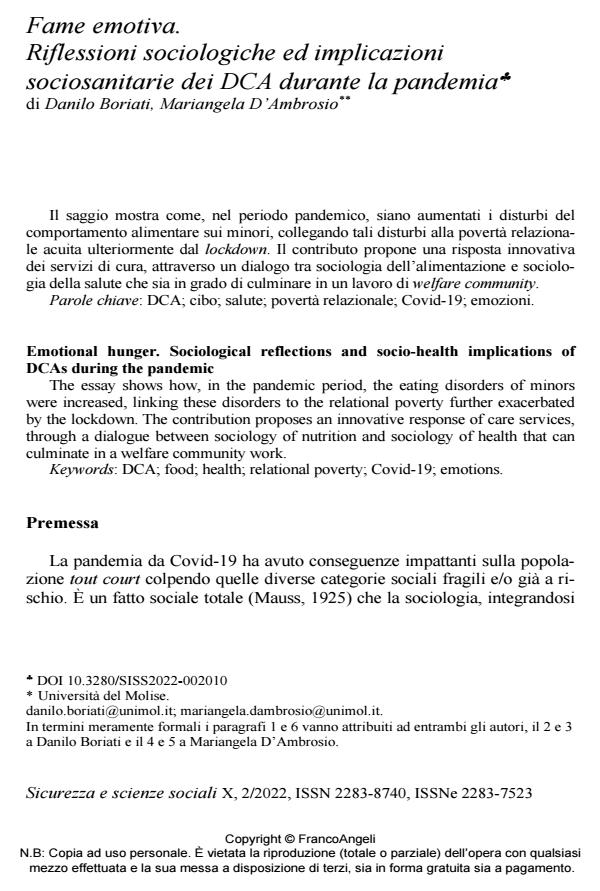Emotional hunger. Sociological reflections and socio-health implications of DCAs during the pandemic
Journal title SICUREZZA E SCIENZE SOCIALI
Author/s Danilo Boriati, Mariangela D’Ambrosio
Publishing Year 2022 Issue 2022/2
Language Italian Pages 14 P. 140-153 File size 217 KB
DOI 10.3280/SISS2022-002010
DOI is like a bar code for intellectual property: to have more infomation
click here
Below, you can see the article first page
If you want to buy this article in PDF format, you can do it, following the instructions to buy download credits

FrancoAngeli is member of Publishers International Linking Association, Inc (PILA), a not-for-profit association which run the CrossRef service enabling links to and from online scholarly content.
The essay shows how, in the pandemic period, the eating disorders of minors were increased, linking these disorders to the relational poverty further exacerbated by the lockdown. The contribution proposes an innovative response of care ser-vices, through a dialogue between sociology of nutrition and sociology of health that can culminate in a welfare community work.
Keywords: DCA; food; health; relational poverty; Covid-19; emotions.
Danilo Boriati, Mariangela D’Ambrosio, Fame emotiva. Riflessioni sociologiche ed implicazioni sociosanitarie dei DCA durante la pandemia in "SICUREZZA E SCIENZE SOCIALI" 2/2022, pp 140-153, DOI: 10.3280/SISS2022-002010